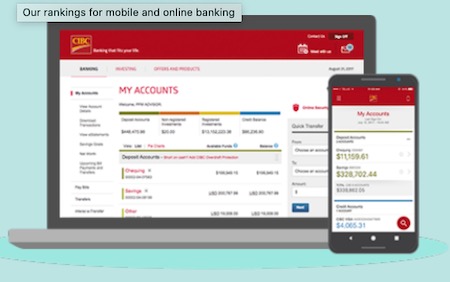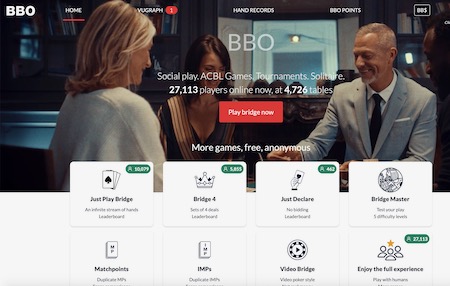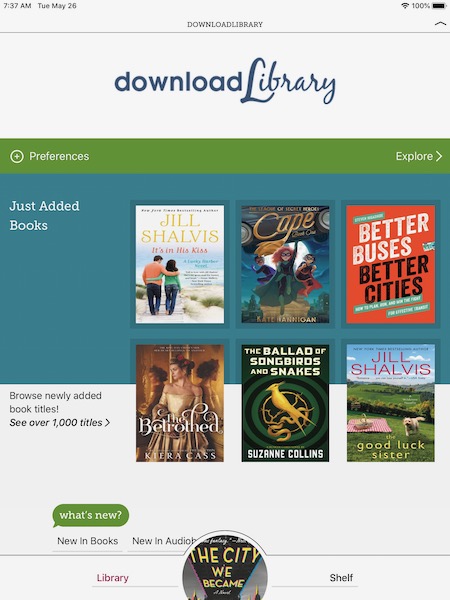Is it just me? Has there not been an explosion in the amount of time Canadians are spending online? Not only are we online, are we not attempting to use a myriad of new features and services, many of which we never even knew existed? It feels like the COVID-19 pandemic has become the unsolicited push that many of us may have needed to broaden our technological horizons.
Having been a sci-fi nerd since I first read “The Wonderful Flight to the Mushroom Planet” when I was a wee lad, I am one of those people who is constantly looking over the hill to see what new scientific innovation is about to be unleashed upon us. Having been born at a time in history that allowed me to experience the development of the personal computer right from the get-go was probably the best thing that could have happened to me.
My interest in new technological developments has led me to become a bit of a techno-weenie. You may have surmised that from the fact that I’ve managed to produce a website. But, I’m not just into this for my own sake. I also have a very keen interest in how other people, especially in my own age group, are progressing with their own computer-based understanding and use.
The net result of all of this is that I have been mightily interested with what I see unfolding before me in the COVID-19 era. I have been amazed at how quickly people have taken to applications that suddenly became important to learn in the pandemic imposed lockdown. I have found this to be particularly true of folks who are now in the retirement phase of life.
When I began contemplating the writing of this article I thought it would be strictly based on my own observations and opinions, not necessarily substantiated by facts. But recently articles in the Globe and Mail directly examined some of the concepts I was planning explore. I am now able to refer to some actual facts in this two part summary.
 Zooming
Zooming
For quite some time now, some folks I know have used Apple’s FaceTime to have video chats. These have generally been with family members. The nice thing about FaceTime is that it is incredibly simple to use, like most of Apple’s products. You put in the contact information of the person you want to call, click the video button, their Apple device rings like a phone at the other end, and you are connected. Bob’s your uncle.
But suddenly, after the lockdown began, everyone wanted to talk with several other persons at the same time, and not all of them owned an Apple product. People quickly figured out the best way to do that was via Zoom meeting software, and the only way it was going to happen was for them to download it and develop a working understanding of how to use it.
Zoom is not a particularly easy application to use. Someone has to set up and manage the meeting, emails with a link to the meeting have to be sent to participants, participants have to be brought into the meeting after they check in, etc.. I don’t think I am exaggerating when I say that absolutely everyone I know has become extremely proficient at using Zoom to host virtual get-togethers. This is a group technological breakthrough of biblical proportions. 🙂
And, it’s not just Zoom. I have had friends contact me using a myriad of video chat services built into other applications like Facebook Messenger and WhatsApp. Bill Murray, the comedian, was interviewed recently during the first live golf event since it was all shut down, and he announced that he had just downloaded and was using Skype for the first time ever.
It is going to be very interesting to see what happens after the pandemic ends. Will people continue to use video chat applications as part of their regular social interactions? Or will they simply revert to what worked before.
”Contaminated” Cash and Online Banking
All of the quotes in this section are from the Globe and Mail article, “How the coronavirus could change work, industry and personal finance forever”. It is well worth the read.
Many of the discussions that we have with friends in our various videoconferencing get-togethers is how our activities have changed in the COVID-19 pandemic era. One that seems to pop up with great regularity during these chats is that nobody really wants to be handing over or receiving potentially “contaminated” cash. Everyone is all about paying with debit cards or credit cards, preferably in situations where all you have to do is tap to pay and not even handle the machine.
“The signs have popped up in stores across Canada: requests – sometimes demands – for customers to pay by credit or debit and to keep their cash in their wallets.
Canadians’ use of cash has been on the decline for years as e-commerce and tap-and-go payments displaced legal tender.
The novel coronavirus and the resulting restrictions on retailers has accelerated that decline, with health concerns about contaminated cash adding to long-standing technological pressures.”
Another issue that our friends are talking about is how often they are now using Interac to send money to folks, rather than attempting to pay/reimburse them with cash. An example of this is how we reimburse our neighbours for picking up our groceries. They shop twice a week and have been very gracious in picking up anything that we need at the same time. Pre-pandemic we would have invited them in and handed over the required amount of cash. Now, we keep a running total of how much we owe them for a couple of weeks, and then we send them that amount electronically via Interac from our online banking. This is a couple that lives a few houses down the street from us. Things have changed.
“It’s forcing a faster adaptation,” says Karl Littler, senior vice-president of public policy at the Retail Council of Canada.
Early indications suggest two trends are driving the move away from cash since the mid-March onset of the coronavirus crisisThe first is a surge in e-commerce as consumers turn to virtual retailers.
Equally as significant is a sharp rise in electronic transfers. Interac Corp. says the number of first-time e-transfer users has risen by 62 per cent since mid-March. “
The other phenomenon I have observed indirectly is an increased emphasis on online banking. It is hard to turn on the television these days without seeing an ad from the major banks extolling the virtues of getting set up to do one’s banking online. We have been doing it for years, and it surprised me to find out in the quote below that almost half of Canadians had still not been doing it.
“We’re seeing a generational shift,” Bank of Montreal CEO Darryl White said. “Many will say: ‘Why would I go back? I didn’t do this before because I really didn’t want the friction of learning. Now I’ve learned.’”
At the largest banks, only slightly more than half of all customers were using digital banking regularly before the pandemic.
Now, they are seeing large surges in online registrations – up 39 per cent in the past two months – and digital banking sessions are up 10 per cent to 30 per cent. Banks have rushed to digitize the remaining paper-based processes – Toronto-Dominion bank launched more than 30 new digital forms in the early weeks of the crisis.”
I am quite certain that Darrell White is correct when he suggests that online banking is going to become a regular banking experience for most Canadians moving forward.
 Online Games
Online Games
I decided to entitle this section “online games” rather than “online gaming” simply for a very arbitrary reason. When I hear the phrase “online gaming” the vision that pops into my head is of teenage boys locked away in their basements battling other teenage boys in various first-person shooter online games. I had something much different in mind for this piece.
We recently received an email from friends suggesting that we try out an online game as a means of interacting with our grandson. They were doing it with their grandchildren and claimed they were having lots of fun doing so. Sounded like an OK idea.
Additionally, I had a FaceTime conversation with a former colleague and friend who was telling me all about the wonderful things that her 82-year-old mother was now doing online. Her mother has figured out how to use both FaceTime and Zoom, and is participating in lots of video chats with friends and family and attending church services and Probis meetings virtually. AND, she is playing online bridge.
Just yesterday, as I worked on this piece, the Love-goddess announced that she and her bridge group had all signed on to use an online bridge gaming site. This may well make me the last person in the country who is not playing some form of online game.
I know there are sites where you can play conventional games like chess, scrabble, and monopoly. There are also lots of other interesting offerings on the web. I conducted a simple Google search of the phrase “COVID-19 online games”. This produced a long list of sites where they had already collated selections of online game playing sites for people’s reference. Even Forbes magazine produced a list of somewhat intriguing offerings (https://www.forbes.com/sites/willmcgough/2020/03/20/cant-travel-play-these-games-instead-during-covid-19-and-social-distancing/#7fce3aa13e62) I may just try my hand at one or two of them.
Game on ladies and gentlemen!
e-books
I am pretty old-school when it comes to reading. I love doing it, and I love using actual books to do it. That said, my recent health issues have made it necessary for me to switch and do all of my reading on my iPad. I will not bore you with the specific details of why that has happened. Over the years I have often read books on my iPad as I travel. So, it’s not something I haven’t done before, nor is it something I’m philosophically opposed to doing. I’m just doing it more often, and sourcing books in a slightly different way these days.
Over the years whenever I read electronic versions of books I typically purchased them through Apple’s online bookstore. Their prices are reasonable, they have an outstanding selection, and they usually offer the new release books that I want to read.
Most recently I did a 180° switch and have begun to get my e-books from another source, libraries. I did so because a buddy of mine in Toronto was talking up how he recently switched to using e-books offered by the local library system. Like in most cities, Toronto’s libraries are all closed, so he had no other choice but to start downloading digital books. He is not quite as willing as I am to spend cold hard cash on his reading material.
I was so inspired by his sincere promotion of his library’s e-book service that I decided to try it out myself. And I’m glad I did. I have set up access using the “Libby” application used by most libraries and now enjoy picking up e-versions of books for free. The only drawback when using the library system is that often a book you would like to read is signed out and not available. But, I can usually find something that looks appealing. You can put a hold on any book you want in the same way you can put a hold on a paper book, so you will get to read it eventually. Without any actual knowledge of the statistics, I think I am safe in assuming that lots of other people are getting their reading material this way as well. Try it out!
Next Up
In Part B of this continuing piece I will be dealing with the recent proliferation of online shopping. Not a new concept of course, but one that has grown and changed dramatically during the current pandemic.


Yikes… Easter on Zoom, ebooks for sure, too much screen time for social updates, and lots of t.v. ( Amazon Prime + Netflix). New world in Covid times